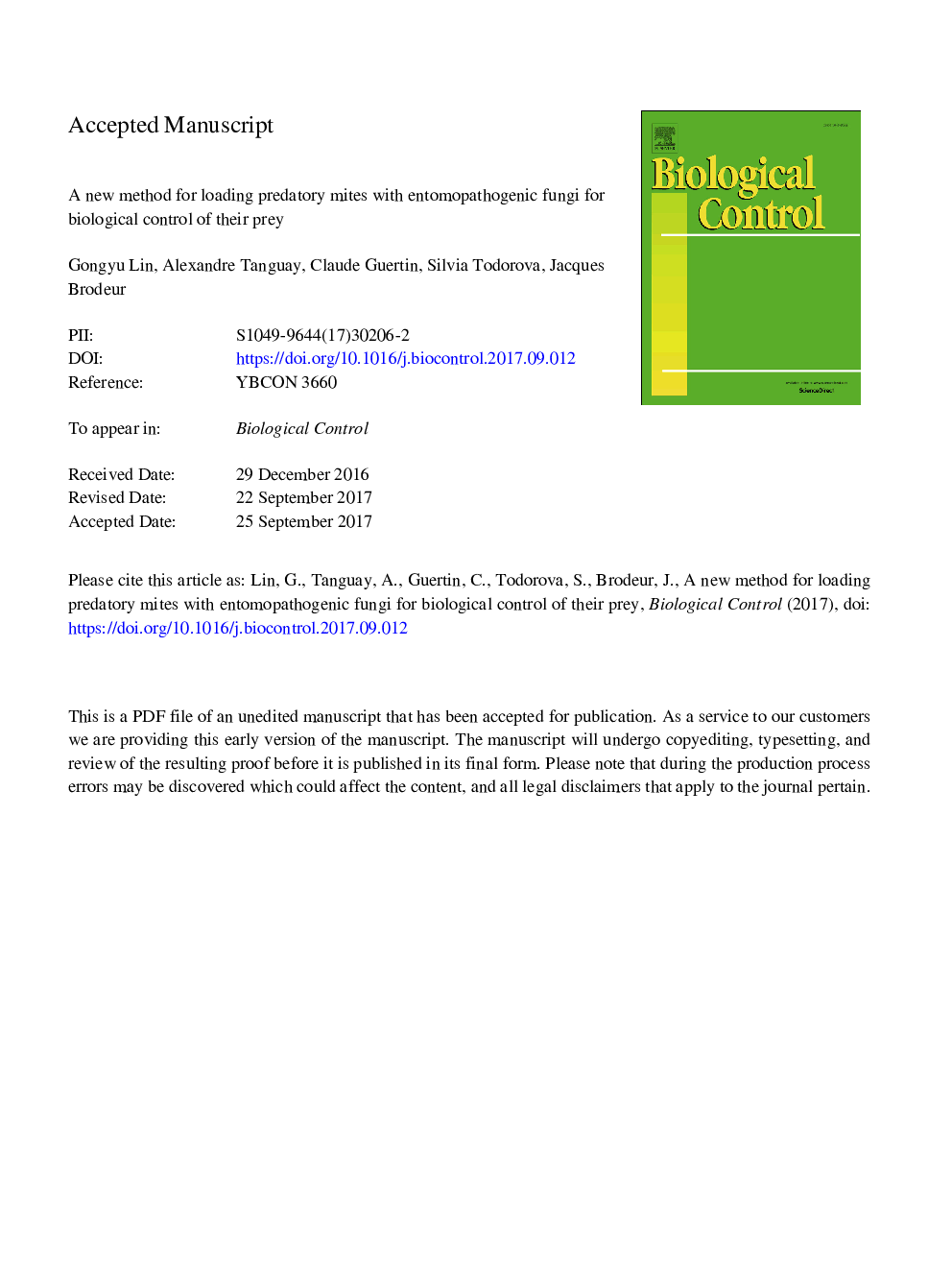| کد مقاله | کد نشریه | سال انتشار | مقاله انگلیسی | نسخه تمام متن |
|---|---|---|---|---|
| 5760699 | 1624219 | 2017 | 31 صفحه PDF | دانلود رایگان |
عنوان انگلیسی مقاله ISI
A new method for loading predatory mites with entomopathogenic fungi for biological control of their prey
ترجمه فارسی عنوان
یک روش جدید برای بارگذاری خوشه های خرابکارانه با قارچ های اندوموپاتوژن برای کنترل زیستی شکار آنها
دانلود مقاله + سفارش ترجمه
دانلود مقاله ISI انگلیسی
رایگان برای ایرانیان
موضوعات مرتبط
علوم زیستی و بیوفناوری
علوم کشاورزی و بیولوژیک
علوم زراعت و اصلاح نباتات
چکیده انگلیسی
Movement of invertebrates can promote contact between entomopathogenic fungi and their hosts. In biological control programs, foraging predatory mites have the capacity to increase disease transmission rate and can potentially be used as fungal vectors. In this study, a method has been developed for predatory mites to collect and transport Beauveria bassiana conidia directly from the commercial rearing substrate. Increasing the duration of exposure (2-24 h) to contaminated substrate significantly increased the number of conidia retained on the body of a soil predatory mite, Stratiolaelaps scimitus. However, this was not observed in two phytoseiid species, Neoseiulus cucumeris and Amblyseius swirskii. These results suggest that upon receiving predatory mites from a supplier of biocontrol agents, conidia can be mixed into the substrate and, for the soil predatory mite, the length of time between mixing and release can be manipulated to determine the conidia load. Furthermore, the B. bassiana strain ANT-03 showed low virulence towards N. cucumeris, and had no significant effect on survival of A. swirskii or S. scimitus. However, stage-specific virulence was observed with their shared prey, the western flower thrips Frankliniella occidentalis. Exposure to Beauveria bassiana (107 conidia mlâ1) significantly reduced survival of adults, pupae and 2nd instar larvae, but not 1st instar larvae. This biological model fits the profile of a suitable pathogen-vector-host association, where the pathogen uses vectors as dispersal agents and the host as a resource for reproduction.
ناشر
Database: Elsevier - ScienceDirect (ساینس دایرکت)
Journal: Biological Control - Volume 115, December 2017, Pages 105-111
Journal: Biological Control - Volume 115, December 2017, Pages 105-111
نویسندگان
Gongyu Lin, Alexandre Tanguay, Claude Guertin, Silvia Todorova, Jacques Brodeur,
